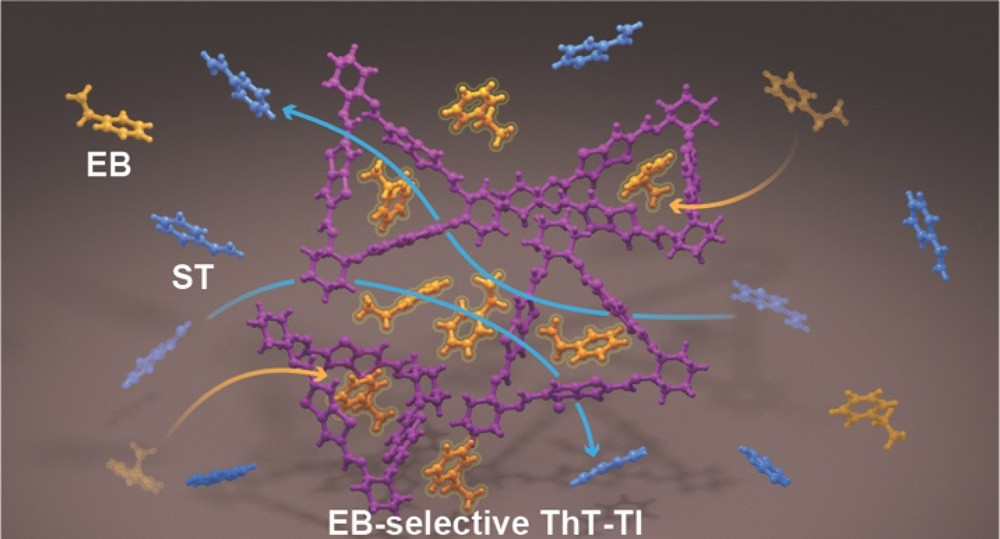

The separation of ethylbenzene (EB) and styrene (ST) mixtures to obtain pure ST has been an enduring challenge for the petrochemical industry. So far, adsorptive separation using porous materials has mainly focused on capturing ST rather than EB, where high temperatures are needed to reactivate the sieving materials and collect the product. Here, we tuned the host–guest interactions in thienothiophene-based trianglimine (ThT-TI) macrocycles to selectively adsorb the unreacted EB over ST, after a dehydrogenation reaction, to readily provide pure ST without the need for further thermal treatments. This is the first report on the selective adsorptive separation of EB over ST using macrocycles as molecular hosts. Both crystalline and amorphous ThT-TI can be used to separate EB with 96% uptake capacity. Single-crystal and powder X-ray diffraction patterns suggest that this selective adsorption arises from a guest-induced structural reordering and involvement of the sulfur atoms in host/guest C–H···π interactions. We believe that this work paves the way for a new generation of molecular sieves that are designed to afford high-purity products by in situ capturing of the unreacted starting materials.
